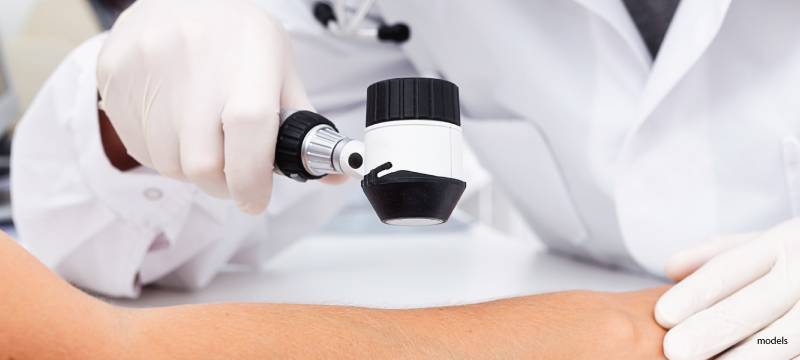Cyst Removal Treatment Options

If you find bump or lump on your skin, you may have a cyst. Skin cysts can develop on the surface of your skin, just below the surface or deeper in the tissues. In general, cysts are not harmful, but treatment may be recommended to prevent an infection or abscess.
What is a Skin Cyst?
A skin cyst is a cavity in the skin that may be filled with any number of substances, such as pus or even air. Some cysts can be cancerous, but most do not pose any serious health risks. In some cases, cysts will heal without treatment, but you should have the lump examined for a proper diagnosis and course of treatment. There are several types of cysts that occur in the skin.
Epidermoid Cyst
Epidermoid cysts develop as painful red bumps that may have some swelling. These types of cysts are most common on the genitalia, neck, face, back, and head. Epidermoid cysts are caused by excessive keratin in the skin.
Sebaceous Cyst
If you find a swollen bump on your skin that is very painful, it may be a sebaceous cyst. These types of cysts are found on the upper body, neck, and face. They grow very slowly, but become quite large over time. The cyst is filled with some type of liquid, so it may be semi-soft to the touch.
Ganglion
Ganglion is a unique type of cyst that develops around the tendons of the hands, wrist, feet, or ankles. These types of cysts are caused by overuse of a joint or an injury that causes an accumulation of fluid.
Chalazion
If you find an unusual lump on your lower or upper eyelid, it may be a chalazion. These types of cysts are typically painless, but can become infected. A chalazion is caused by some type of blockage in the gland that excretes oil to the skin around your eyes.
How and Where Do Cysts Develop?
Most cysts are caused by some type of blockage in the structures of the skin, such as an oil gland or pore. When these structures are blocked, fluid and other debris builds up inside tiny cavities in the skin. If the cyst is not allowed to drain or cannot drain, the result is inflammation, redness, and infection.
Why Should People Not Pop Cysts?
Cysts are normally filled with some type of infection or other substance that is harmful to the tissues of your skin. If you attempt to pop a cyst on your own, you risk pushing the contents of the cyst deeper into your skin and into the surrounding healthy tissues. If you have a cyst, the best approach is to have a dermatologist examine the lump and administer the appropriate treatment.
What is Cyst Removal?
Cyst removal involves more than draining the substance from inside the cyst. Any type of cyst has an outer shell or sac that contains the substance, and this should be removed in order to prevent the cyst from returning. The tissues around the cyst may also need some attention if there are signs of abscesses or infection.
How is Cyst Removal Performed?
Cyst removal is a minor surgery that is performed on an outpatient basis, typically with only local anesthesia to numb the area. The surgeon makes an incision in the cyst, cleans out the substance, and removes the cyst sac. The incision is closed with sutures to protect the tissues from infection while you heal. If the surgeon suspects that the cyst may be cancerous, a sample is sent to a lab for evaluation.
Is Cyst Removal Painful?
Depending on the location of your cyst, you may need to limit use of the area to allow the tissues to properly heal. The area may feel tender and you may notice some mild swelling. We will provide aftercare instructions before you leave our office. Aftercare instructions are provided when you go home, and you should look for any reddening of the skin, discomfort, obvious swelling, and other indications of infection.
What to Expect After Cyst Removal
Healing from a cyst removal procedure can take two to three weeks, and possibly longer for larger cysts. The scar will first develop as pinkish tissue and fade over the following 12 months. You will have a visible scar that is slightly darker than your natural skin color, and your surgeon takes every possible measure to keep the scar as small as possible.
Disclaimer: The contents of the Westlake Dermatology website, including text, graphics, and images, are for informational purposes only and are not intended to substitute for direct medical advice from your physician or other qualified professional.
